Robert E. Howard: The Sword Collector and His Poetry
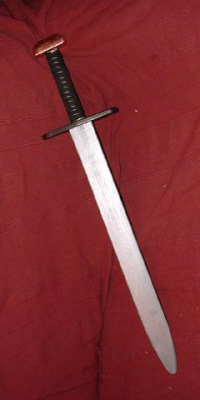
Battles were fought and won based on the strength and keenness of blades as well as the ability to use them effectively. Bob Howard was not only interested in the various types of swords, he was also fascinated with the history they represented. In his poetry and his stories, he uses his knowledge of weapons, historical people, places and events to give us vivid images of those ages.
In March 1933, Robert E. Howard wrote to H. P. Lovecraft about his interest in swords:
I envy you your access to the museums you mentioned. I’ve, naturally, never seen anything of the sort, though I remember some very good displays in the museums of New Orleans, especially Civil War relics. Weapons, especially edged weapons, axes, swords, and spears, hold my attention as nothing else can. Long ago I started collecting them, but found it a taste far too expensive for my means. I still have the things I did manage to get hold of – a few sabers, swords, bayonets and the like. (The Collected Letters of Robert E. Howard, v. 3, p. 31)
And Robert E. Howard’s interests in swords was not limited to collecting them.
I used to wish that I could learn to fence, but the opportunity never presented itself, fencing masters not being very commonly met with in West Texas. A friend and I, several years ago, decided to try to learn the art by practice, and being unable to obtain foils, we used a pair of army swords. It was my misfortune, however, to run him through the right hand in the very first bout, and thereafter he could never be persuaded to fence again.” (Collected Letters, v. 3, p. 242)
There is no mention made of who the unfortunate friend was but the picture below shows Howard and his friends engaged in what looks like it could become a fencing bout.
(l-r) Robert E. Howard, Truett Vinson and Tevis Clyde Smith
References to various types of swords appear throughout Howard’s letters and the following quotation reveals he was well acquainted with their use and function.
I don’t know whether the slashing habit is an Indian or a Spanish instinct. If Spanish, it may be a survival of Moorish influence. As of course you know, the Oriental nations favor curved blades, and generally slash instead of thrusting. The early Nordic warriors hacked too, but they used straight swords, depending on the weight of the blade and the force of the blow, whereas the Orientals curved the blade to gain the effect. But the early Greeks and the Romans understood the art of thrusting, as witness their short swords. And the rapier was created in the West. I am not prepared to say whether the Spaniards borrowed any ideas or weapons and their use from the Moors, but I will say that Mexican swords are generally more curved than those used by Americans. I noted this recently during a trip to the battlefield of Goliad where Fannin and his men were trapped by the Mexican army. I saw two sabers – a Mexican arm and an American – both of which were used in that battle. The Mexican sword was curved far more than the Texan weapon – in fact, it would be almost impossible to thrust effectively with it. Blade, hilt and guard were all made in one piece of steel, and I could hardly get my hand inside the guard to clutch the hilt; some grandee wielded it, no doubt, some proud don with blue blood and small aristocratic hands – well, I hope he got his before Fannin surrendered, and gasped his life out in the mud of Perdido with a Texas rifle-ball through him. (Collected Letters, v. 2, p. 234)
While most of us are already acquainted with the sword skills of Howard’s heroes and heroines, swords also played an important role in his poetry. He mentions them in over eighty poems and there are more references under the synonyms: “steel” and “blade.” Yet he refers to fewer than a dozen specific types in his vivid descriptions of battles and sword fights. One of these is the broadsword.
His shield the viking’s broadsword turned,
Along his arm the keen edge burned.
Lines such as these from “The Ballad of King Geraint” come alive when we have a mental picture of the sword that was used and know its power. Exactly what is a broadsword? What does it look like? To give added enjoyment and understanding while reading these battle scenes, each sword type mentioned in Robert E. Howard’s poetry is listed below, along with a description, an excerpt from his poetry and, whenever possible, a picture of the sword, based on the context of the poem.
Note that all poems quoted are from The Collected Poetry of Robert E. Howard, (The Robert E. Howard Foundation Press) and are also available in Frank Coffman’s, Robert E. Howard Selected Poems (Lulu Press.)
THE BROADSWORD
The broadsword is described as a large, heavy sword with a broad blade for cutting rather than thrusting. It had a two-edged blade measuring two-three inches wide at the base and tapered to a point; the length ranged from thirty to forty-five inches and it weighed between three and five pounds. It was a close contact weapon used primarily for cutting or slicing an opponent and was capable of cutting off limbs or the head of an enemy in one stroke.
The broadsword is referenced in many of Howard’s poems, including this excerpt from “The Phoenix on the Sword,” a poem based on the Conan story of the same name.
Chapter V
What do I know of cultured ways, the gilt, the craft and the lie?
I, who was born in a naked land and bred in the open sky.
The subtle tongue, the sophist guile, they fail when the broadswords sing;
Rush in and die, dogs-I was a man before I was a king.
-The Road of Kings.
THE CUTLASS
Pirate Cutlass
A sword that conjures up images of sailors and of pirate battles is the cutlass, a short, heavy sword with a curved single-edged blade.
Howard refers to the cutlass twice in these excerpts from his poem “Drake Sings of Yesterday.”
“Frown hard upon their deeds if so ye will,
And name them crimson-handed, black of heart-
They braved unknown worlds and seas, had their fill
Of death and danger where the sunsets spill
Unreckoned perils, and they took their part
Of cannonade and cutlass, wind and rack.
They paved the way for ye who were to come;
Aye, ye who followed rode a beaten track. . .
While Howard speaks of the broadsword singing in “The Phoenix on the Sword,” in another quote from “Drake Sings of Yesterday,” he attributes a more sibilant sound to the cutlass as its power is directly connected to buccaneers, pirates and privateers:
Oh, hissing cutlass, hissing cutlass,
Oh, hissing cutlass backed by English brawn!
Oh, plunder, plunder, plunder,
Oh, plunder from a thousand cargoes drawn!
THE GLAIVE
Glaive is an archaic word for a sword, especially the broadsword (see picture and description above under “The Broadsword.”) This synonym was only used by Howard in “The Ballad of King Geraint,” a poem which is approximately thirty-five pages long and as seen from this excerpt, it is filled with heroic characters and vivid battle scenes:
The horse of Angus was overthrown,
He rose in a wave of foes alone.
He hurled his shield among the brand,
Gripped his mace in his mighty hands.
The Saxons rushed like a brainless wave,
Hewing and stabbing with spear and glaive.
He loomed above them like a tower,
A man of iron in that red hour.
His great voice roared through curse and yell;
The great black mallet rose and fell.
Shield nor helmet its blows withstood,
Brass or iron or steel-braced wood.
He struck as a bolt of thunder strikes.
They thrust with spears and heavy pikes;
They hewed at corselet and crested crown,
They gripped his legs to wrestle him down.
But the spears were splintered, the swords were bent,
And they staggered back when their strength was spent.
And Angus as he broke their brands,
Shook off the grasp of their nerveless hands.
He crushed their breasts and smashed their brains,
Ceorl and eorls and jarls and thanes
Fell like leaves on that fatal spot
To the berserk wrath of the giant Scot.
But still by hundreds they crowded in,
From all sides smote with a fearful din.
From every joint of his armor ran
The blood of the terrible Northern man.
His shattered helmet fell in twain,
The blood was starting from every vein.
His armor battered, torn and rent,
But he dealt his blows without stay or stint.
THE HANGER (SMALL SWORD)
British Small Sword
By definition, a hanger is a short sword that may be hung from a belt. Known as the small sword, it is a shorter and much faster weapon than the rapier and is equally capable of attack and defense.
Twice REH makes use of its capabilities in these excerpts from, “The Affair at the Tavern,” a poem about a young woman who is kidnapped by a hired thug, Mark, and taken to Sir Dickon Roche, who, angered by her refusal of him, plans to ruin her. But when Mark tells him that since he “shared in the toil, he wants to share in the spoil,” Sir Dickon fingers his sword:
“Must I parley, devils of Hell! with you?
“Go! Ere I run your black heart through!”
The blade leaped out like a flame of blue.
But Mark whirled round in fierce rebellion
And his lips writhed in face of a hellion.
His hanger hummed as he tore it clear
And the girl shrank back in sudden fear.
The blade whirled in a wheel of fire,
“Stand, Sir Dickon, raper and liar!
“Stand and fight for your foul desire!”
And the blades clanged in the silent room
And the blue sparks showered in the gloom.
The hanger sang through the singing air-
Mark stood weaponless and bare.
The pale girl saw his dark lips part
As the rapier sank beneath his heart.
THE MONGOL SWORD
Image from the movie Mongol
The Mongol sword was a slightly curved scimitar (pictured and described below.) This type of sword was more useful for slashing attacks than stabbing and thrusting, making it easier to use on horseback.
Howard refers to this type of sword in the poem, “Babylon (draft version)” which is printed in full below. His poetic descriptions bring to life the eerie ruins of Babylon as he speaks of the downfall of this historical city.
For I have watched the lizards crawl through high Belshazzer’s marble hall
When twilight’s ghostly petals fall in Babylon, dead Babylon.
Where many a golden girdled spire like molten moonlight veined with fire
Toppled before the ages’ ire in Babylon, far Babylon.
Upon that dust dead distant noon when Babel heard the trumpet’s tune
And Tamerlane broke down the moon and ringed the walls of Babylon.
That day that towers sapphire-kist reeled to a Mongol sword that hist
And broke the silver sighing mist that parted doom from Babylon.
And I have watched dim star-dark shades come down the lonely colonnades
When the grey rose of twilight fades in Babylon, in Babylon.
POMMEL
Various types of pommels
The pommel is the knob on the hilt of a sword or saber. It is made in a variety of shapes and sizes. Some were beautifully crafted and individual to the sword’s owner.
Pommel appears only once in Howard’s poetry but he uses it effectively in this excerpt from “Eric of Norway.” Again, an epic tale of battles, heroism and loyalty.
Harald leaned against the taffrail and gripped it with his hand;
The blood streamed from his arm and head, and he could scarcely stand.
When Eric saw his foeman’s plight, with laughter loud he roared,
Like a buffalo bull he charged to meet-the point of Harald’s sword!
For Harald’s strength for an instant returned and he put it all in a thrust;
To the hilt it sank in Eric’s breast and Eric bit the dust.
Over the hilt and pommel the red life blood did run,
And the star of Eric of Norway went down with the setting sun.
Hasting stood by a stanchion with Ragnar at his feet,
And deep in his heart he had believed that Eric could ne’er be beat.
THE RAJPUT SWORD
There are two sword types listed in this category.
The first is the Khanda, a double-edged, straight blade sword that is unique to the ancient Kshatriyas of the Hindus. The blade is usually broad and quite heavy, and broadens from the hilt to the tip, where it transforms rather abruptly to somewhat resemble the tips of ancient Roman swords. The hilt has a small metal spike coming out in the opposite direction which is typical of Khanda. While the straight swords around the world were primarily used for thrusting and stabbing with the tip, the Khanda was mainly used to hack or cleave with the edge of the blade.
The other types, the Rajput straight sword, (as well as other swords curved both inward and outward), have been used in Indian history since the Iron Age.
Rajput sword curved inward. Photo by Gavin Nugent, used with permission.
From Howard’s reference to the Rajput sword in the Untitled poem, (“Now bright, now red, the sabers sped among the racing horde,”) printed in full below, it is impossible to tell whether he was referring to the Khanda or the longer sword that curved inward. Note the many weapons mentioned in this poem: saber, knife, sword, spear as well as a shield. “Sword,” including the word “saber,” is used six times in eight lines as he gives a vivid description of the battle. Those who are fans of Howard’s, El Borak, will recognize his comrade-in-arms, Yar Ali Khan, who also appears in other REH poems.
Now bright, now red, the sabers sped among the racing horde,
The Afghan knife reft Hindu life and leaped the Rajput sword.
Oh, red and blue, the keen swords flew where charged the hosts in whirls,
And as in dreams rang loud the screams of ravished Hindu girls.
And through the strife, where sword and knife clashed loud on spear and shield,
With sword in hand, Yar Ali Khan rode o’er the battle-field.
From heel to head the chief was red, the blood was not his own.
In crimson tide his sword was dyed that had so brightly shone.
THE RAPIER
A long, slender, two-edged sword with a cuplike hilt, used in the sixteenth and seventeenth centuries; a light, sharp-pointed sword lacking a cutting edge and used only for thrusting.
According to the Sword Forum website, the rapier era may be divided into three distinct periods. The early period, in the middle sixteenth century, was characterized by the usage of heavy cut and thrust rapiers. During the middle period rapiers came of age; Sword dimensions stabilized and the thrust gained prominence, though the cut was retained to some extent. The masters of this era, exemplified by Capo Ferro (late sixteenth century), had a distinctly modern outlook, holding that the sword alone was sufficient for defense and that technique should be developed in the direction of gaining “time” (loosely, initiative) rather than pre-attack preparation. The late rapier era, also known as the transition period, was relatively short, from about 1650 to 1680, and is remembered by the shift from single to double time fencing. During these closing years the cup hilt made its appearance, probably in response to ever tighter swordplay; blades got shorter, lighter and the cut as well as defense with the left hand were abandoned, at least in principle.
The rapier shows up in several Howard poems, including “An Incident of the Muscovy-Turkish War” with its familiar hero, which has been printed in full below.
Many were slaughtered in that final charge;
Along the rail we saw the gunners kneel,
And then the world turned red with screaming steel,
But on we plunged, wild firing, wide and large,
Our bullies fell in rows along the marge;
Blindly we felt deep water under heel,
Swarmed up the anchor chains to roar and reel
With all the yelling devils of the barge.
A giant bashaw cleft eight Cossack skulls,
And then his saber met a blade of flame-
And as his ships went down with blazing hulls:
“Allah!” he screamed, “Thou swine-what is thy name?”
Our captain’s rapier leaped-a fire of blue.
And “John Paul Jones!” said he, and ran him through.
Note also Howard’s reference above in the second stanza to the saber, which brings us to the next sword type.
THE SABER
The saber is defined as a heavy cavalry sword with a one-edged, slightly curved blade as well as a light dueling or fencing sword having an arched guard covering the hand and a tapered flexible blade with a cutting edge on one side and on the tip.
The saber is also referenced frequently in his poetry, including this excerpt from “A Song of the Don Cossacks”:
Wolf-brother, wolf-lover,
Over the river the kites hover
Where witch-light glimmers
And tall grass shimmers-
What dead things shall their eyes discover?
What, when the sabers sing in the gloaming,
What, when the gray wolves cease their roaming?
Wolf-lover, wolf-brother,
We are sworn to slay each other.
THE SCIMITAR
The scimitar is a saber having a curved blade with the edge on the convex side and used chiefly by Arabs and Turks. While the blade is always curved, the sword itself was forged in many varieties and shapes.
Scimitars were used in horse warfare because they were of relatively light weight compared to other, larger swords. Also they were valued for their curved design which was especially useful for slashing opponents while riding on a horse. Mongols, Rajputs and Sikhs are among many warriors who used them in warfare. The earliest known use of scimitars is from the ninth century, when they were used among soldiers in the Khurasan region of Persia
In this excerpt from “Crusade,” REH takes us into the middle of a battle. We are there as “horses stumble and riders reel” and scimitars and broadswords flash and clamor.
Wild flying hoofs whirl up the sands
And the hot wind sings to the flashing brands.
The red lights glance from the helmet’s crest
And flame on a thousand spears at rest.
White-feathered cloud the arrows whir
Flinging their scorn to the hissing spur.
Horses stumble and riders reel-
In, close in! And ply your steel.
Cursed, thrice cursed his name who flees
Though the swift shafts hum like a million bees.
Never a one would check that pace!
On they roar like a tidal-race!
Black eyes flare, dark faces leer
Scimitars thrum on the leveled spear.
On they roar like a steel-tipped wall.
Shields are shattered and turbans fall.
Mingled and broken ranks arrayed
Knight to warrior and blade to blade.
The desert rocks to the reeling hosts
And the red wind roars with a thousand ghosts.
The broadswords clamor their wild refrains
As the red rout breaks o’er the crimson plains.
THE TULWAR
A talwar, or tulwar, is a type of saber from Mughal India dating back to at least the seventeenth century. In what was called Hindustan it became by far the most popular choice of sword. As a single-handed sword the talwar displays a metal hilt with short quillions for the upper guard, and a unique flat-disc pommel. The blades and hilts of the talwar were often very ornate.
In the Mughal texts the talwar is practically a Rajput sword (pictured and described above under “The Rajput Sword”) and in describing a victory gained by a Rajput general over Afghan rebels it is stated that, “the Afghan army’s sword broke under the Rajput talwar.” However, from Rajput tradition, it becomes clear that an older and more typical Rajput sword is the Khanda (also pictured and described above under “The Rajput Sword”) which is a double-edged straight blade that seems to be similar to ancient specimens depicted in sculptures and wall paintings such as the one pictured below.
Painting showing both Tulwar and Khanda swords
One of the best versions of the talwar is the Sirohi, which is manufactured at the town of that name in south-western Rajasthan. The Sirohi is lighter and more slender than other versions.
In Howard’s poem, “The Tartar Raid” he gives an astounding portrayal of the battle. The poem is printed in full below:
The snow-capped peaks of Ural shone white against the sky,
The chill, clear air of morning clouded the tulwar blade,
When we rode through the Ural pass that guards the Arakzai,
And drew upon the Oxus banks to break the Tartar raid.
Men of the Afghan hills we were, from Kabul to Delhi,
Warriors who well could sit a horse or wield the Khyber knife,
From Kabul and from Kandahar, from Balkh to Ahazai,
Well skilled in border warfare, well trained in tribal strife.
Upon the Oxus’ southern bank the army took its stand,
The horse of Balkh and Ghuzni, for reserves, were in the rear,
Upon the bank, nearest the foe, the horse of Akbar Khan,
Well chose the king to guard the front, the man who knew no fear.
The burning cities of Yarkand glowed red against the sky,
A true sign that was to us that the foe was very near.
Above the field of battle, the kites did wheel and fly,
The plain was filled with flying folk, who fled, half mad with fear.
The Tartars took the cities and gave them to the flame,
And smote the helpless people with spear and sword and knife,
Few maidens fled those cities, not feeling Tartar shame,
And out of every group of five, one man escaped with life.
Robert E. Howard’s letters, stories and poems are filled with detailed descriptions of swords. Not only did he collect them, his interest in them became a part of his life. In a letter to H. P. Lovecraft dated July 1934 (Collected Letters, v. 3, p. 239), Howard describes his trip to the Carlsbad Caverns in New Mexico. After three pages of detailed descriptions of chambers and columns and vaulted roofs, he ends with,
…as we emerged into the only part where daylight strikes, the great chamber directly under the opening, a shaft of marvelous, gleaming, almost frosty blue slanted down like a radiant sword; only the beam of the burning New Mexican sun, transformed into a miracle of glittering color, giant in volume, as is everything in that country, transforming the cavern into a vast pagan shrine.
“A shaft of marvelous, gleaming, almost frosty blue slanted down like a radiant sword.” A poetic tribute from the poet who collected swords.
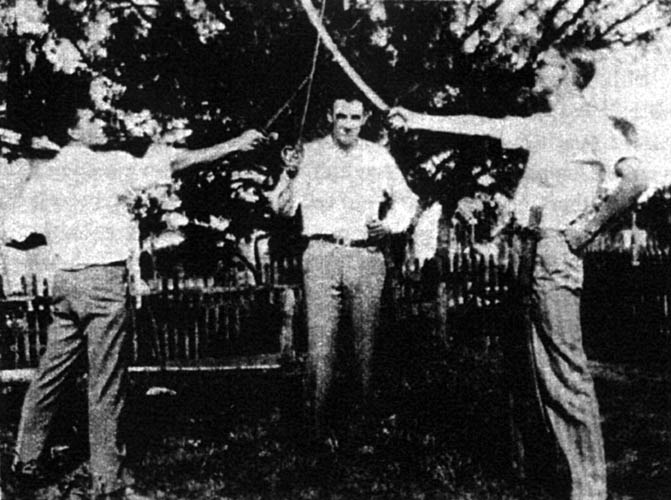
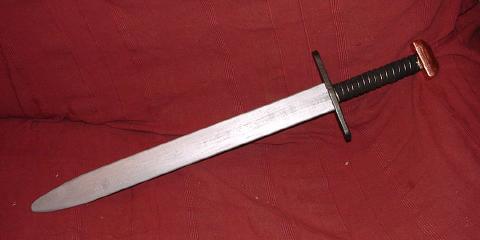
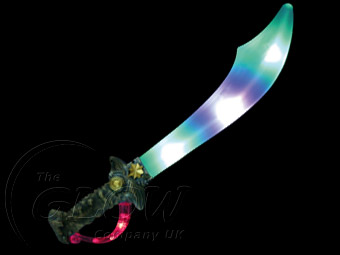

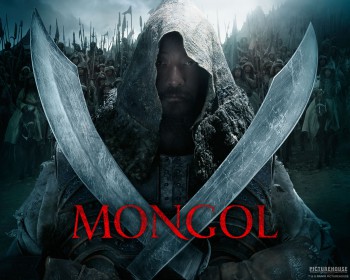
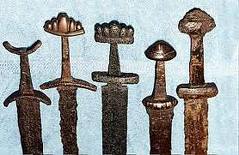
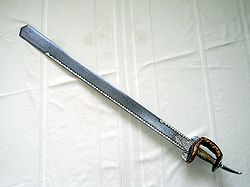
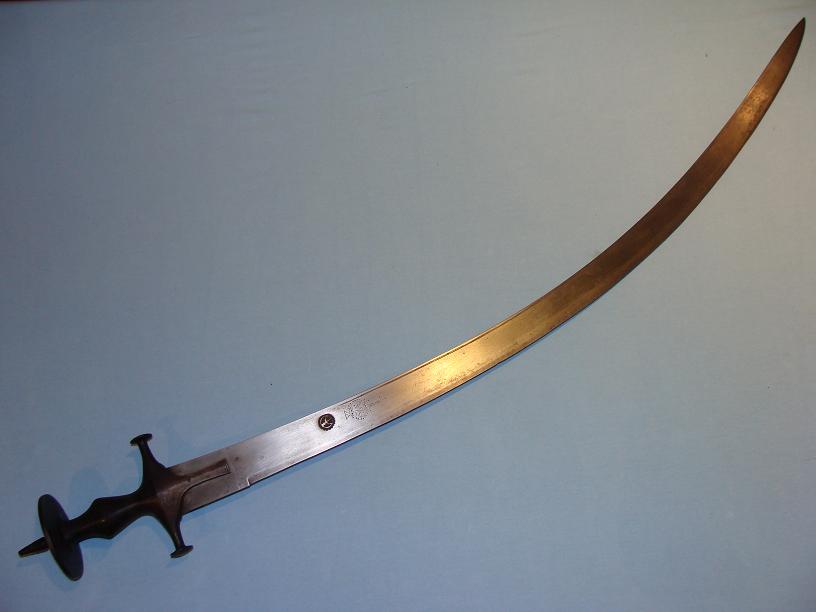
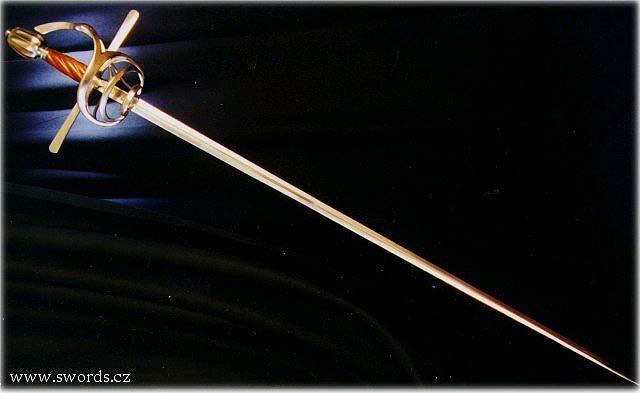
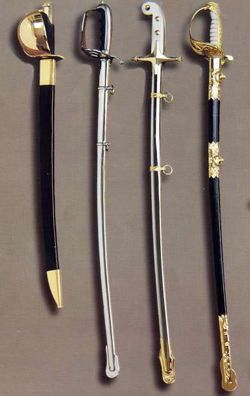
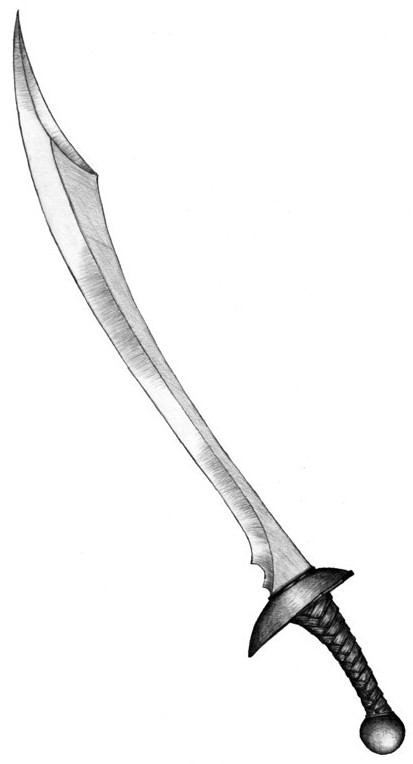
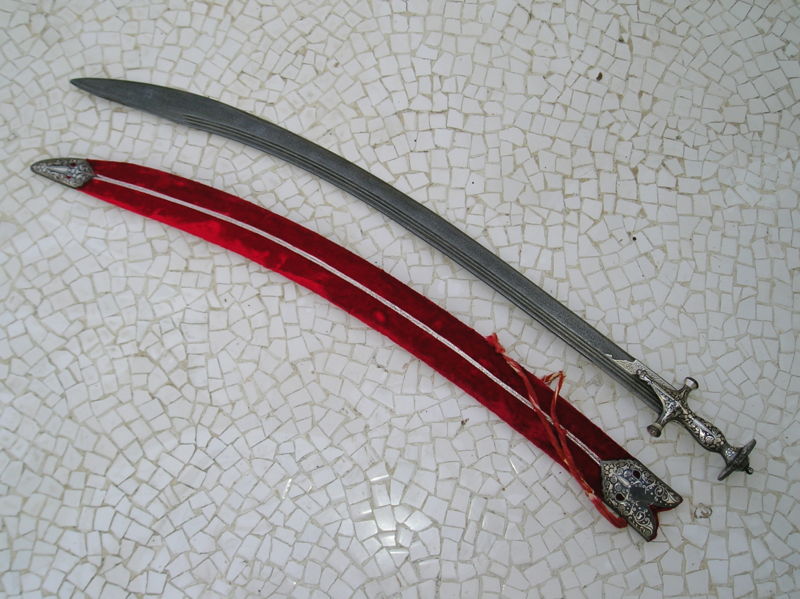
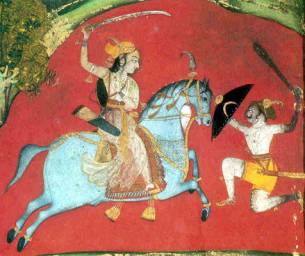
A great essay. I enjoyed the excerpts of Howard’s poetry along with images of the weapons in question.
I always thought of glaives as a pole arm weapon– a single edged blade on the end of a spear-like haft. Interesting to learn about other meanings of the word.
Incidentally, the “hanger” or small sword is the equivalent of the modern epee, which is one of the three commonly used western fencing weapons.
I was also surprised by this meaning of the word “glaive,” as I have also mostly seen it as a polearm. I checked in the OED, which shows the earliest use as “a lance,” and later as a type of halberd or bill. It also shows the “sword” meaning becoming quite popular in the nineteenth century, whose poetry I imagine REH could well have found it in.
Though I have to admit, the poem doesn’t make it clear which use REH meant. I’ll have to keep these different meanings in mind in my own writing; perhaps I’ll just avoid “glaive” completely!
Hi Daniel, I finally figured out how to comment back. Sandro and I discussed this in emails also. I saw the various definitions when I looked it up but chose the one I thought came closest to the meaning in the poem. You’re right, the usage of the word in “The Ballad of King Geraint” isn’t clear. The line of poetry also includes *hewing,* although only those of you familiar with lances could know for sure whether a lance could *hew.* I took it to mean a sword. In Merriam-Webster online, the etymology shows it is Middle English, from Anglo-French, sword, lance, from Latin *gladius* sword and is dated 15th century. M-W also shows the usage is *archiac*: sword, especially: broadsword. However when searching for a photo, I found a variety of images that were not a sword. Thanks Daniel and Sandro for the interesting discussion on glaive. Lots of fun and it is one of REH’s unusual words.
Barbara
[…] http://www.blackgate.com/2010/08/09/robert-e-howard-the-sword-collector-and-his-poetry/ Posted by Blue Tyson 4.0, study, t non-fiction, z free sf Subscribe to RSS feed […]
[…] A rather interesting essay about Robert E. Howard’s interest in swords, and a technical discussion of the blades that turned up in his poems. […]
The pirate cutlas does not look like I expected. It looks more like a scamitar
Hi Thedrragonsedge.
Thanks for commenting. Yes, there is a resemblance. I believe the pirate’s sword pictured above though is shorter than the scimitar. The image that I used was labeled “A Pirate’s Sword.”
During this past week, I attended the “Genghis Khan, The Exhibition* at The Tech in San Jose and the variety of sword types used is incredible. Brian Leno posted news about the exhibition on the REH Two-Gun Recanteur website so I will post an account of it there but if my pictures turn out well, I’ll have enough material for an article re REH and Genghis Khan that I will post here as well. It was a fascinating exhibition to say the least.
Again, thanks for commenting.
Barbara
I guess I am just used to the Pirates of the Caribbean types of swords. Looking forward to the Genghis Knan information. I the mean time I will search for the website you mentioned
Hi Dragsonsedge, You won’t have to wait for an article from me. Kortoso on the Conan.com forum has posted some pictures already from the Genghis Khan The Exhibition in San Jose. I just hope mine are as good. Here is the link to his slide show.
http://s227.photobucket.com/albums/dd229/dsunlin/Genghis%20Khan/?albumview=slideshow
Enjoy!
Barbara
I checked out Kortoso slide show on Genghis Khan The Exhibition in San Jose. I was very interesting. Some of the pictures were a little out of focus. You should have no problem with your pictures. That is if you have auto focus feature on the camera. lol
Re: Monday, August 9th, 2010 | Posted by Barbara Barrett
Do contact me if you would like to know more about Rajput Swords and would like to see a live display in October 2010.
[…] I wrote “Robert E. Howard: The Sword Collector and His Poetry” in August 2010, it was to highlight REH’s interest in swords. The article listed each type of […]
The small-sword is not the same as a hanger. A hanger is more akin to a cutlass or hunting sword (cuttoe). Here is a good discussion about the terminology: http://www.swordforum.com/forums/showthread.php?91115-Cutlass-vs-Hanger
Hi Odysseus14,
I checked out the link you recommended and it seems as if there is really no definite answer to what is a hanger. I found the definition of a small sword also called an epee on several websites. From the context of the poem which I’ve shown below, it appears that REH thought of it as a type (smaller version?) of the rapier. See what you think and let me know:
Must I parley, devils of Hell! with you?
“Go! Ere I run your black heart through!”
The blade leaped out like a flame of blue.
But Mark whirled round in fierce rebellion
And his lips writhed in face of a hellion.
His hanger hummed as he tore it clear
And the girl shrank back in sudden fear.
The blade whirled in a wheel of fire,
“Stand, Sir Dickon, raper and liar!
“Stand and fight for your foul desire!”
And the blades clanged in the silent room
And the blue sparks showered in the gloom.
The hanger sang through the singing air—
Mark stood weaponless and bare.
The pale girl saw his dark lips part
As the rapier sank beneath his heart.
Mark reeled as the rapier stung
Then blindly forward his body flung
Fingers wide and arms outswung,
Barbara
Barbara, you are correct that the definition is rather vague and that the term can be applied to several sword types. Howard seems to be using the term “hanger” and “rapier” for the same sword–is that correct?
I also wanted to add that the scimitar pictured above is a fantasy design (probably appropriate for Howard!) and not a historical example. Scimitar was a kind of generic word used for curved swords of the Middle East, and sometimes even curved Western European swords based on Eastern designs. Collectors and sword enthusiasts today would probably use the term shamshir or saif to refer to the scimitar.
[…] to Chicago. Barbara has been blogging for Black Gate for many years, and her early article “Robert E. Howard: The Sword Collector and His Poetry” is one of the most popular pieces we’ve ever published… but we’ve never […]